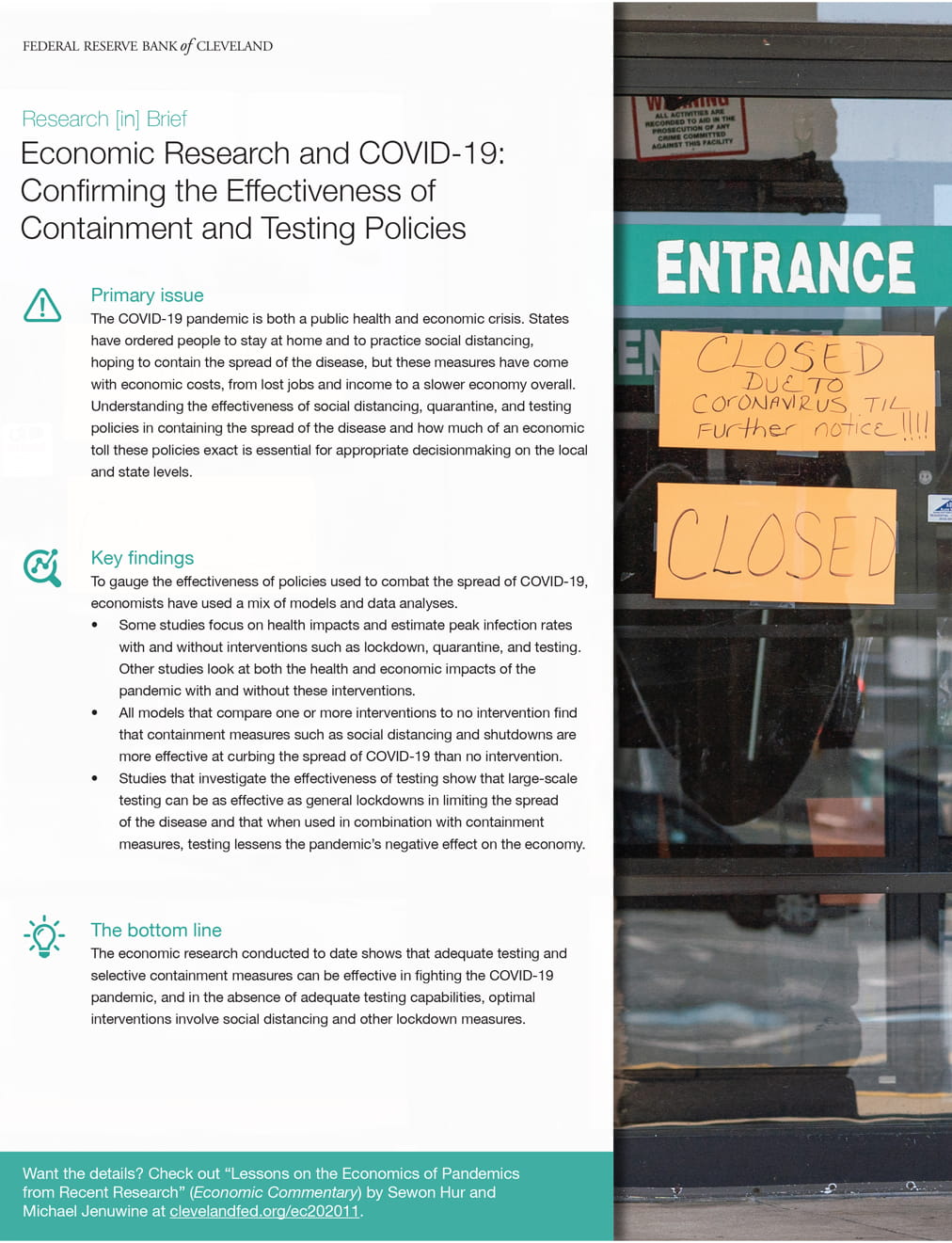- Share
Research [in] Brief: Economic Research and COVID-19: Confirming the Effectiveness of Containment and Testing Policies
Infographic

Full text
Primary issue
The COVID-19 pandemic is both a public health and economic crisis. States have ordered people to stay at home and to practice social distancing, hoping to contain the spread of the disease, but these measures have come with economic costs, from lost jobs and income to a slower economy overall. Understanding the effectiveness of social distancing, quarantine, and testing policies in containing the spread of the disease and how much of an economic toll these policies exact is essential for appropriate decision making on the local and state levels.
Key findings
To gauge the effectiveness of policies used to combat the spread of COVID-19, economists have used a mix of models and data analyses.
- Some studies focus on health impacts and estimate peak infection rates with and without interventions such as lockdown, quarantine, and testing. Other studies look at both the health and economic impacts of the pandemic with and without these interventions.
- All models that compare one or more interventions to no intervention find that containment measures such as social distancing and shutdowns are more effective at curbing the spread of COVID-19 than no intervention.
- Studies that investigate the effectiveness of testing show that large-scale testing can be as effective as general lockdowns in limiting the spread of the disease and that when used in combination with containment measures, testing lessens the pandemic’s negative effect on the economy.
The bottom line
The economic research conducted to date shows that adequate testing and selective containment measures can be effective in fighting the COVID-19 pandemic, and in the absence of adequate testing capabilities, optimal interventions involve social distancing and other lockdown measures.
Want the details? Check out "Lessons on the Economics of Pandemics from Recent Research" at clevelandfed.org/ec202011
Related resources
Lessons on the Economics of Pandemics from Recent Research
The spread of the COVID-19 pandemic has resulted in a dual public health and economic crisis. Many economic studies in the past few months have explored the relationship between the spread of disease and economic activity, the role for government intervention in the crisis, and the effectiveness of testing and containment policies. This Commentary summarizes the methods and findings of a number of these studies. The economic research conducted to date shows that adequate testing and selective containment measures can be effective in fighting the COVID-19 pandemic, and in the absence of adequate testing capabilities, optimal interventions involve social distancing and other lockdown measures.

